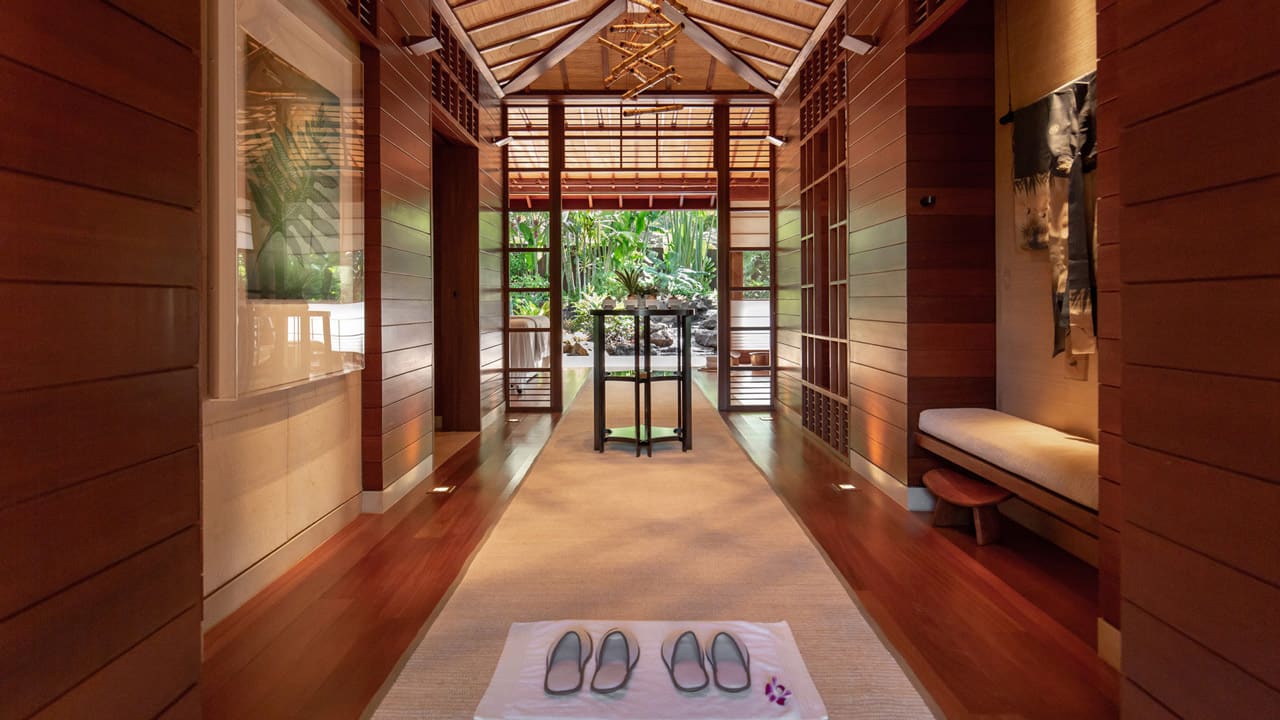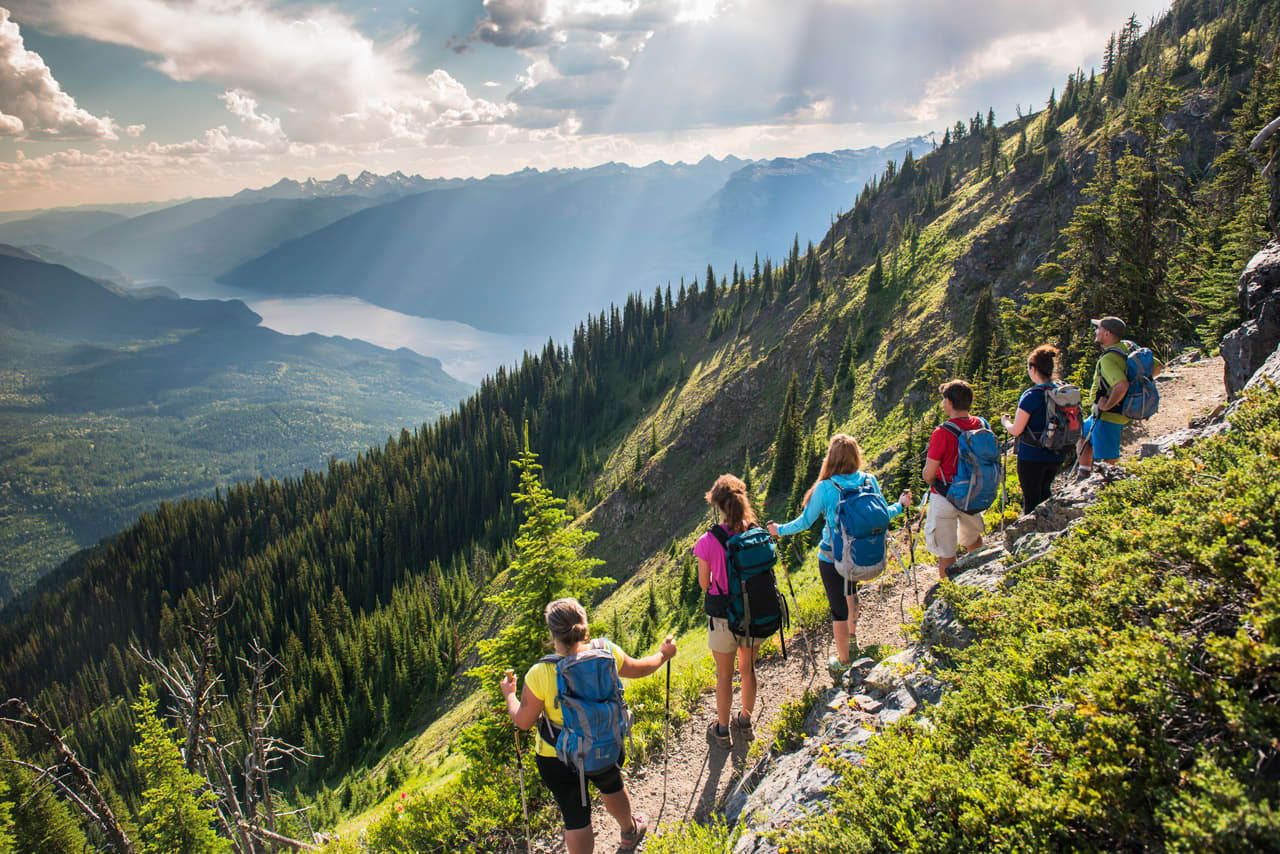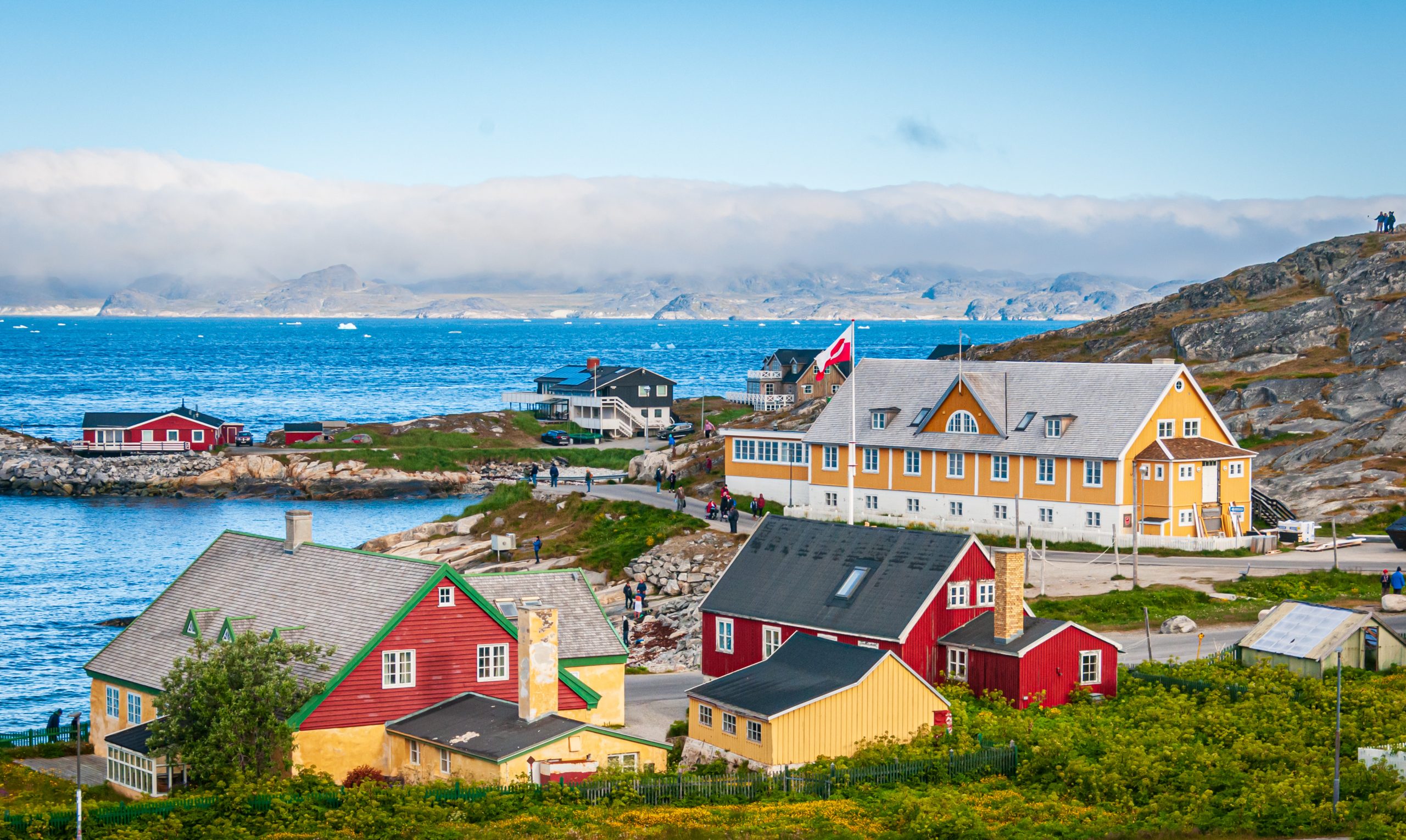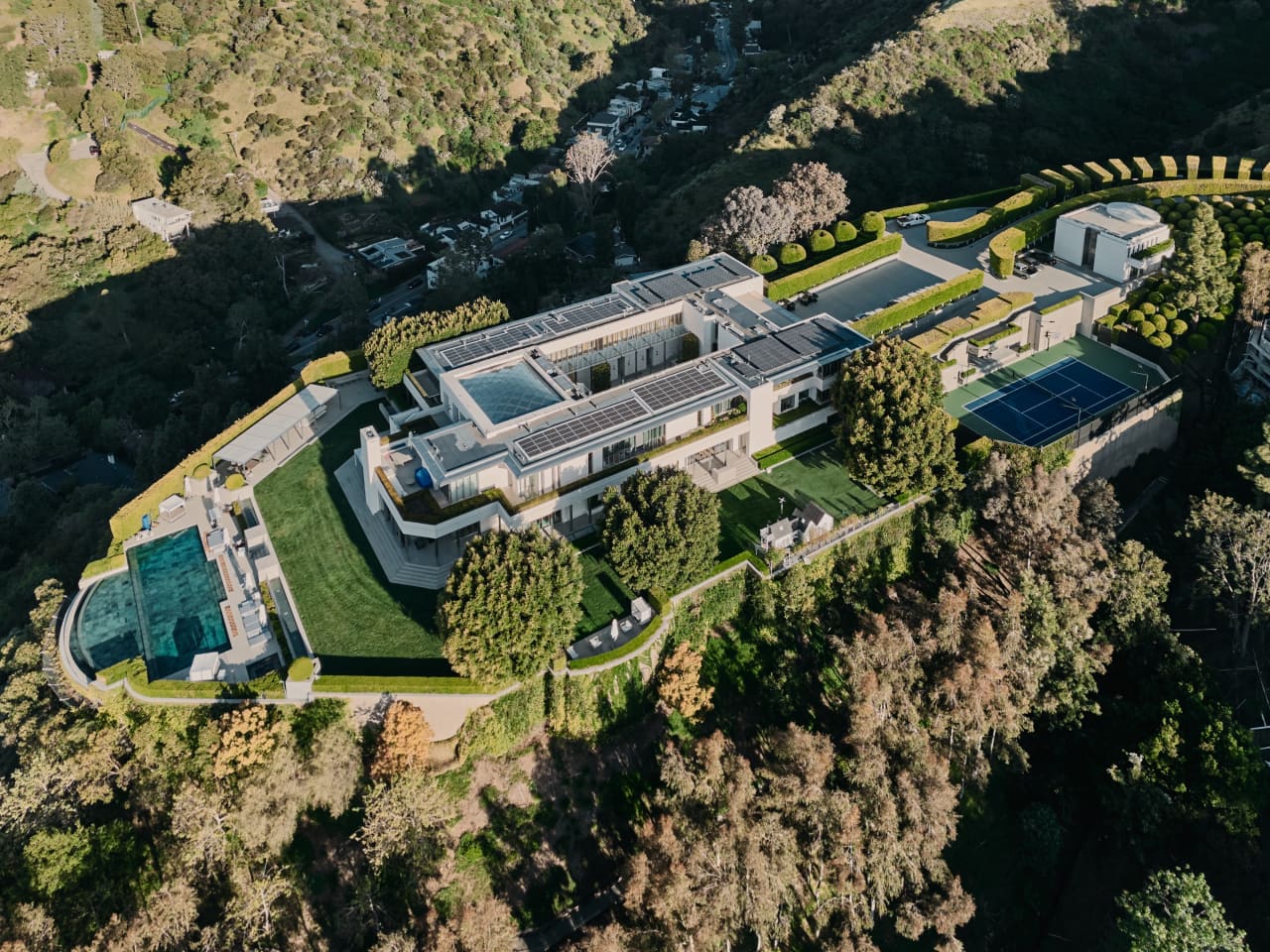Clocking out to Turn Back Time—Vacations That Will Help You Live Longer
Booming demand for wellness tourism shows no slowing, with travel related to health and well-being projected to have reached $1 trillion last year and to hit $1.3 trillion by 2025, according to the Global Wellness Institute, a nonprofit based in Miami.
Curated wellness travel programs are especially sought-after, specifically holistic treatments focused on longevity. Affluent travellers not only are making time to hit the gym while gallivanting across the globe, they’re also seeking destinations that specifically cater to their wellness goals, including treatments aimed at living longer.
“I believe Covid did put a spotlight on self-care and well-being,” says Penny Kriel, corporate director of spa and wellness at Salamander Collection, a group of luxury properties in places like Washington, D.C., and Charleston, South Carolina. But Kriel says today’s spas are more holistic, encouraging folks to understand the wellness concept and incorporate it into their lifestyle more frequently.
“With the evolution of treatment products and technology, spas have been able to enhance their offerings and appeal to more travellers,” Kriel says.
While some growth is connected to the variety of treatments available, results and the digital world are also contributing to the wellness boom.
“The efficacy and benefits of these treatments continue to drive bookings and interest, especially with the support of social media, influencers, and celebrity endorsements,” Kriel says.
While genetics, environmental factors, and lifestyle choices such as regular exercise, a diet free of processed foods, sufficient sleep, and human connection play essential roles in living well and longer, experts believe in holistic therapies to help manage stress, boost immunity, and ultimately influence length and quality of life.
Anti Ageing and Beyond
“For years, people have been coming to spas, booking treatments, and gaining advice on how to turn the clock back with anti ageing and corrective skin treatments,” Kriel says. However, today’s treatments are far more innovative.
On Marinella Beach in Porto Rotondo, on the Italian island of Sardinia, guests at the five-star Abi d’Oru Hotel & Spa can experience the resort’s one-of-a-kind “longevity treatment,” a unique antiaging facial using one of the island’s native grapes: Cannonau. The world’s first declared “Blue Zone”—one of five designated areas where people live longer than average, some into their 100s—Sardinia produces this robust red wine varietal, the most widely planted on the island.
Known as Garnacha in Spain and Grenache in France, Cannonau supposedly contains two to three times more antioxidants than other red-wine grapes. By incorporating Cannonau, Abi Spa says its unique 50-minute longevity session increases collagen production for firmer, younger-looking skin.
Maintaining a youthful appearance is just one facet of longevity treatments, which range from stress-reduction sessions like massage to nutritional support and sleep programs, Kriel says. Some retreats also offer medical services such as IV infusions and joint injections.
Keeping with the trend, Kriel is expanding Salamander Collection’s existing spa services, such as detox wraps and lymphatic drainage, to include dedicated “Wellness Rooms,” new vegan and vegetarian menu items, and well-being workshops. “Sleep, nutrition, and mindfulness will be a big focus for integration in 2024,” she says.
Data-Driven Wellness
Skyler Stillings, an exercise physiologist at Sensei Lanai, a Four Seasons Resort—an adults-only wellness centre in Lanai, Hawaii—says guests were drawn to the social aspect when the spa opened in November 2021.
“We saw a huge need for human connection,” she recalls. But over the past few years, what’s paramount has shifted. “Longevity is trending much more right now.”

Sensei Lanai, A Four Seasons Resort
Billionaire co-founder of tech company Oracle Larry Ellison and physician and scientist Dr. David Angus co-founded Sensei. After the death of a mutual close friend, the duo teamed up to create longevity-based wellness retreats to nurture preventative care and a healthy lifestyle. In addition to the Lanai location, the brand established Sensei Porcupine Creek in Greater Palm Springs, California, in November 2022.
Sensei has a data-driven approach. The team performs a series of assessments to obtain a clearer picture of a guest’s health, making wellness recommendations based on the findings. While Sensei analyses that data to curate a personalised plan, Stillings says it’s up to the guests which path they choose.
Sensei’s core three-day retreat is a “Guided Wellness Experience.” For spa treatments, each guest checks into their own “Spa Hale,” a private 1,000-square-foot bungalow furnished with an infrared sauna, a steam shower, a soaking tub, and plunge pools. The latest therapies include Sarga Bodywalking—a barefoot myofascial release massage, and “Four Hands in Harmony,” a massage with two therapists working in tandem. Sensei Guides provide take-home plans so guests can continue their wellness journeys after the spa.

Sensei Lanai, A Four Seasons Resort
Sanctuaries for Longevity
Headquartered in Switzerland with hotels and on-site spas across the globe, Aman Resorts features an integrative approach, combining traditional remedies with modern medicine’s advanced technologies. Tucked behind the doors of the storied Crown Building in Midtown Manhattan, Banya Spa House at Aman New York—the brand’s flagship spa in the Western Hemisphere—is a 25,000-square-foot, three-floor urban oasis.
Yuki Kiyono, global head of health and wellness development at Aman, says the centre provides access to holistic and cutting-edge treatments benefiting physical, mental, emotional, spiritual, and social well-being. Aman’s customisable “Immersion Programs” consist of a three- or five-day immersion. “The programs encompass treatments and experiences that touch every significant aspect to create a path for longevity, from meditation and mindfulness to nutrition and movement,” Kiyono explains.

Robert Rieger
The spa’s “Tei-An Wellness Solution” features 90- to 150-minute sessions using massage, cryotherapy, and Vitamin IV infusions. Acupuncture is also on offer.
“With its rich history of Chinese Medicine, modern research, and the introduction of sophisticated electro-acupuncture medicine, acupuncture has been proven to assist with problems and increase performance,” Kiyono says.
Resetting the Mind and Body
Beyond longevity, “healthspan”—the number of years a person can live in good health free of chronic disease—is the cornerstone of Mountain Trek Health Reset Retreat’s program in British Columbia, Canada.
Kirk Shave, president and program director, and his team employ a holistic approach, using lifestyles in long-living Blue Zones as a point of reference.
“We improve our daily lifestyle habits, so we live vitally as long as we’re meant to live,” Shave says of the retreat. He built the program from an anthropological stance, referencing humans as farmers, hunters, and gatherers based on their eating and sleeping patterns. Food includes vegetable-centric meals sans alcohol, sugar, bread, or dairy.
Guests wake at dawn each day and have access to sunrise yoga, several hours of “flow” or slow hiking, spa treatments, forest bathing, calming crystal singing-bowl and sound therapy sessions, and classes on stress reduction—one of Mountain Trek’s primary goals. The program motivates people to spend much of their time in nature because it’s been proven to reduce cortisol, the stress hormone that can lead to inflammation and disease when elevated for extended periods.
While most guests aren’t aware of how immersive Mountain Trek’s program is when they arrive, they leave the resort revitalized after the structured, one-week program. Set in the Kootenays overlooking its eponymous river, the resort and adventure promise what Shave calls a “visceral experience of transformation.”
“They’re interested in coming to be in nature,” Shave says of the guests. “They hit a wall in their life and slipped backwards, so they know they need a reset.”

Robert Rieger
This article first appeared in the Winter 2024 issue of Mansion Global Experience Luxury.
 Copyright 2020, Dow Jones & Company, Inc. All Rights Reserved Worldwide. LEARN MORE
Copyright 2020, Dow Jones & Company, Inc. All Rights Reserved Worldwide. LEARN MORE
This stylish family home combines a classic palette and finishes with a flexible floorplan
Just 55 minutes from Sydney, make this your creative getaway located in the majestic Hawkesbury region.
The remote northern island wants more visitors: ‘It’s the rumbling before the herd is coming,’ one hotel manager says
As European hot spots become overcrowded , travellers are digging deeper to find those less-populated but still brag-worthy locations. Greenland, moving up the list, is bracing for its new popularity.
Aria Varasteh has been to 69 countries, including almost all of Europe. He now wants to visit more remote places and avoid spots swarmed by tourists—starting with Greenland.
“I want a taste of something different,” said the 34-year-old founder of a consulting firm serving clients in the Washington, D.C., area.
He originally planned to go to Nuuk, the island’s capital, this fall via out-of-the-way connections, given there wasn’t a nonstop flight from the U.S. But this month United Airlines announced a nonstop, four-hour flight from Newark Liberty International Airport in New Jersey to Nuuk. The route, beginning next summer, is a first for a U.S. airline, according to Greenland tourism officials.
It marks a significant milestone in the territory’s push for more international visitors. Airlines ran flights with a combined 55,000 seats to Greenland from April to August of this year, says Jens Lauridsen, chief executive officer of Greenland Airports. That figure will nearly double next year in the same period, he says, to about 105,000 seats.
The possible coming surge of travellers also presents a challenge for a vast island of 56,000 people as nearby destinations from Iceland to Spain grapple with the consequences of over tourism.
Greenlandic officials say they have watched closely and made deliberate efforts to slowly scale up their plans for visitors. An investment north of $700 million will yield three new airports, the first of which will open next month in Nuuk.
“It’s the rumbling before the herd is coming,” says Mads Mitchell, general manager of Hotel Nordbo, a 67-room property in Nuuk. The owner of his property is considering adding 50 more rooms to meet demand in the coming years.
Mitchell has recently met with travel agents from Brooklyn, N.Y., South Korea and China. He says he welcomes new tourists, but fears tourism will grow too quickly.
“Like in Barcelona, you get tired of tourists, because it’s too much and it pushes out the locals, that is my concern,” he says. “So it’s finding this balance of like showing the love for Greenland and showing the amazing possibilities, but not getting too much too fast.”
Greenland’s buildup
Greenland is an autonomous territory of Denmark more than three times the size of Texas. Tourists travel by boat or small aircraft when venturing to different regions—virtually no roads connect towns or settlements.
Greenland decided to invest in airport infrastructure in 2018 as part of an effort to expand tourism and its role in the economy, which is largely dependent on fishing and subsidies from Denmark. In the coming years, airports in Ilulissat and Qaqortoq, areas known for their scenic fjords, will open.
One narrow-body flight, like what United plans, will generate $200,000 in spending, including hotels, tours and other purchases, Lauridsen says. He calls it a “very significant economic impact.”
In 2023, foreign tourism brought a total of over $270 million to Greenland’s economy, according to Visit Greenland, the tourism and marketing arm owned by the government. Expedition cruises visit the territory, as well as adventure tours.
United will fly twice weekly to Nuuk on its 737 MAX 8, which will seat 166 passengers, starting in June .
“We look for new destinations, we look for hot destinations and destinations, most importantly, we can make money in,” Andrew Nocella , United’s chief commercial officer, said in the company’s earnings call earlier in October.
On the runway
Greenland has looked to nearby Iceland to learn from its experiences with tourism, says Air Greenland Group CEO Jacob Nitter Sørensen. Tiny Iceland still has about seven times the population of its western neighbour.
Nuuk’s new airport will become the new trans-Atlantic hub for Air Greenland, the national carrier. It flies to 14 airports and 46 heliports across the territory.
“Of course, there are discussions about avoiding mass tourism. But right now, I think there is a natural limit in terms of the receiving capacity,” Nitter says.
Air Greenland doesn’t fly nonstop from the U.S. because there isn’t currently enough space to accommodate all travellers in hotels, Nitter says. Air Greenland is building a new hotel in Ilulissat to increase capacity when the airport opens.
Nuuk has just over 550 hotel rooms, according to government documents. A tourism analysis published by Visit Greenland predicts there could be a shortage in rooms beginning in 2027. Most U.S. visitors will stay four to 10 nights, according to traveler sentiment data from Visit Greenland.
As travel picks up, visitors should expect more changes. Officials expect to pass new legislation that would further regulate tourism in time for the 2025 season. Rules on zoning would give local communities the power to limit tourism when needed, says Naaja H. Nathanielsen, minister for business, trade, raw materials, justice and gender equality.
Areas in a so-called red zone would ban tour operators. In northern Greenland, traditional hunting takes place at certain times of year and requires silence, which doesn’t work with cruise ships coming in, Nathanielsen says.
Part of the proposal would require tour operators to be locally based to ensure they pay taxes in Greenland and so that tourists receive local knowledge of the culture. Nathanielsen also plans to introduce a proposal to govern cruise tourism to ensure more travelers stay and eat locally, rather than just walk around for a few hours and grab a cup of coffee, she says.
Public sentiment has remained in favour of tourism as visitor arrivals have increased, Nathanielsen says.
—Roshan Fernandez contributed to this article.
This stylish family home combines a classic palette and finishes with a flexible floorplan
Just 55 minutes from Sydney, make this your creative getaway located in the majestic Hawkesbury region.






















